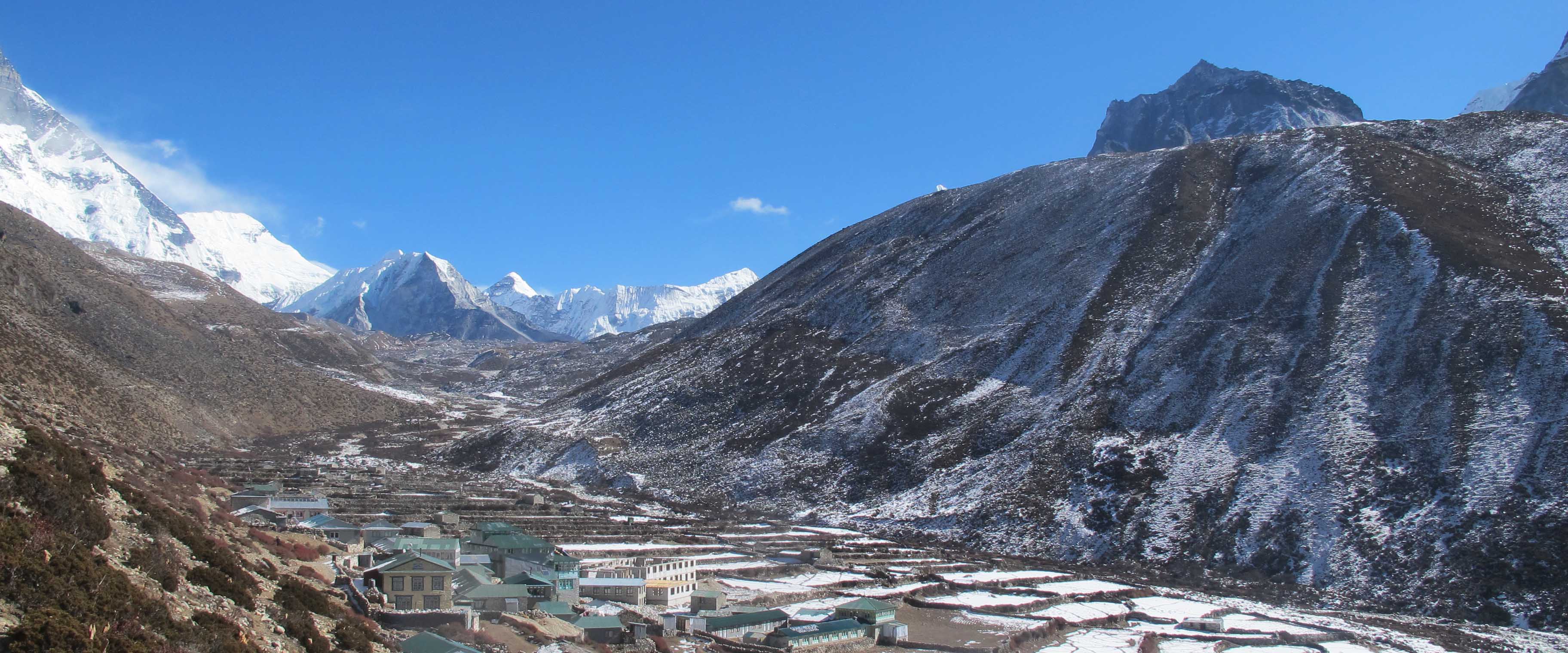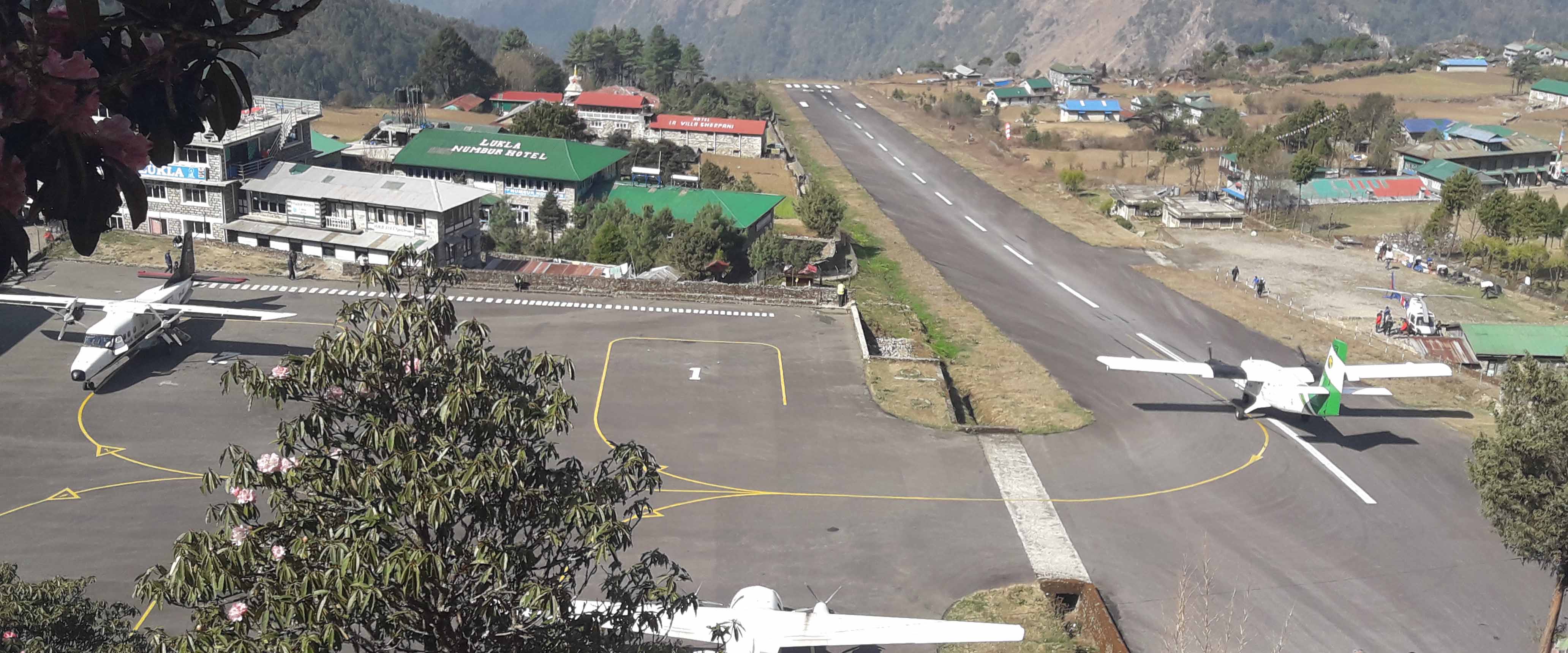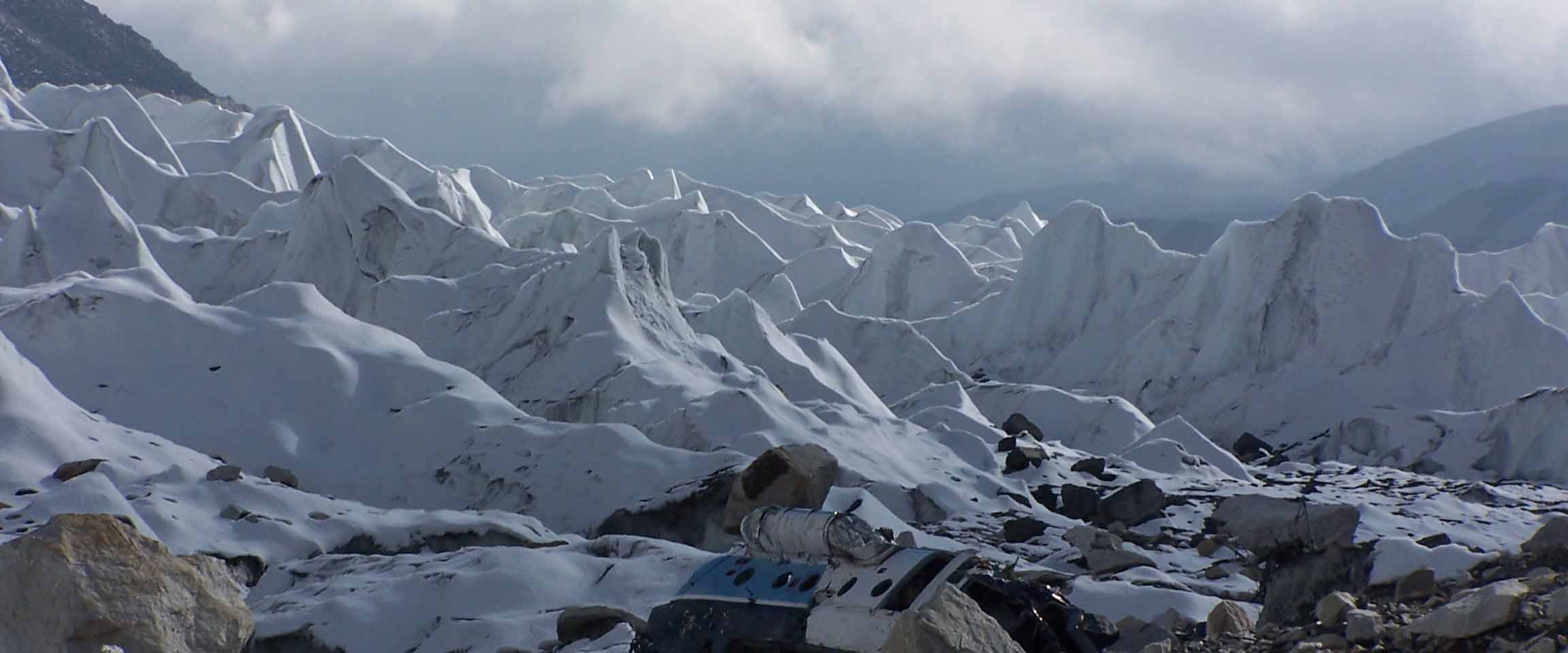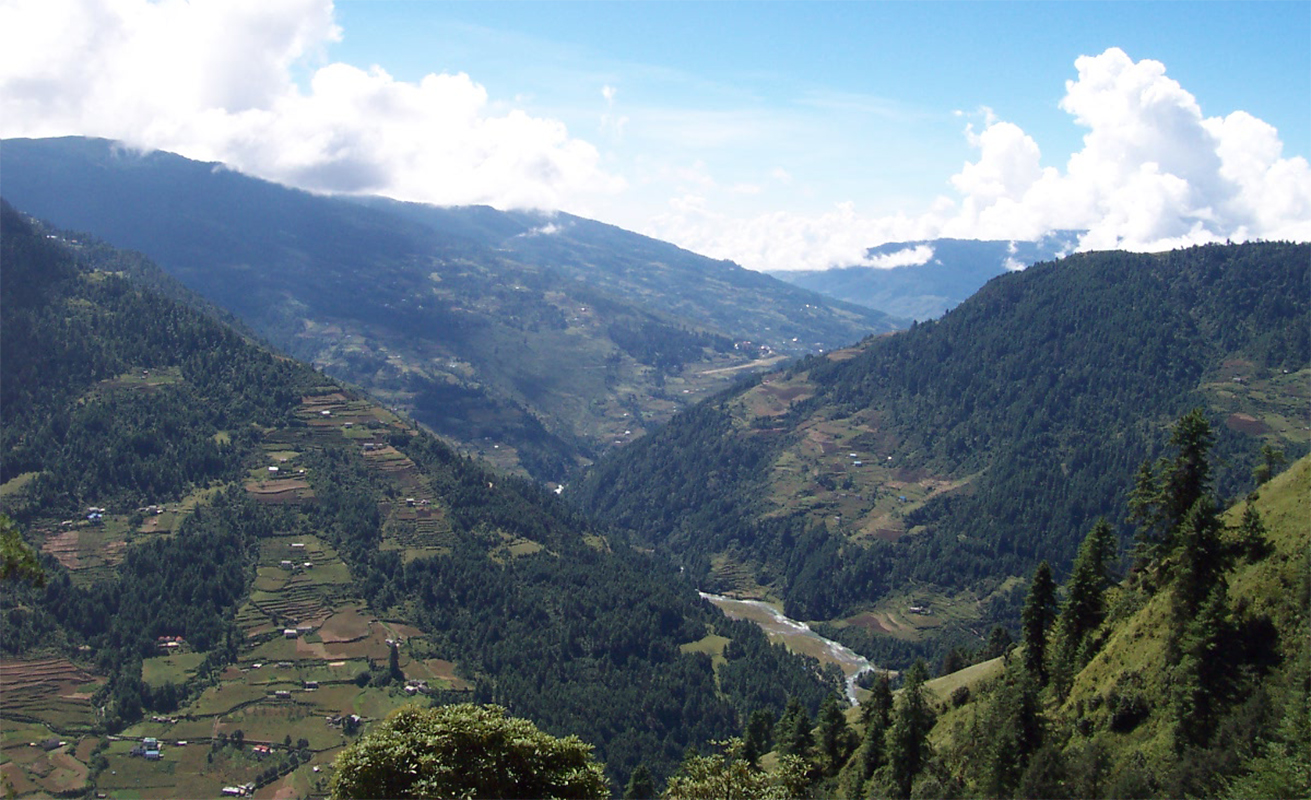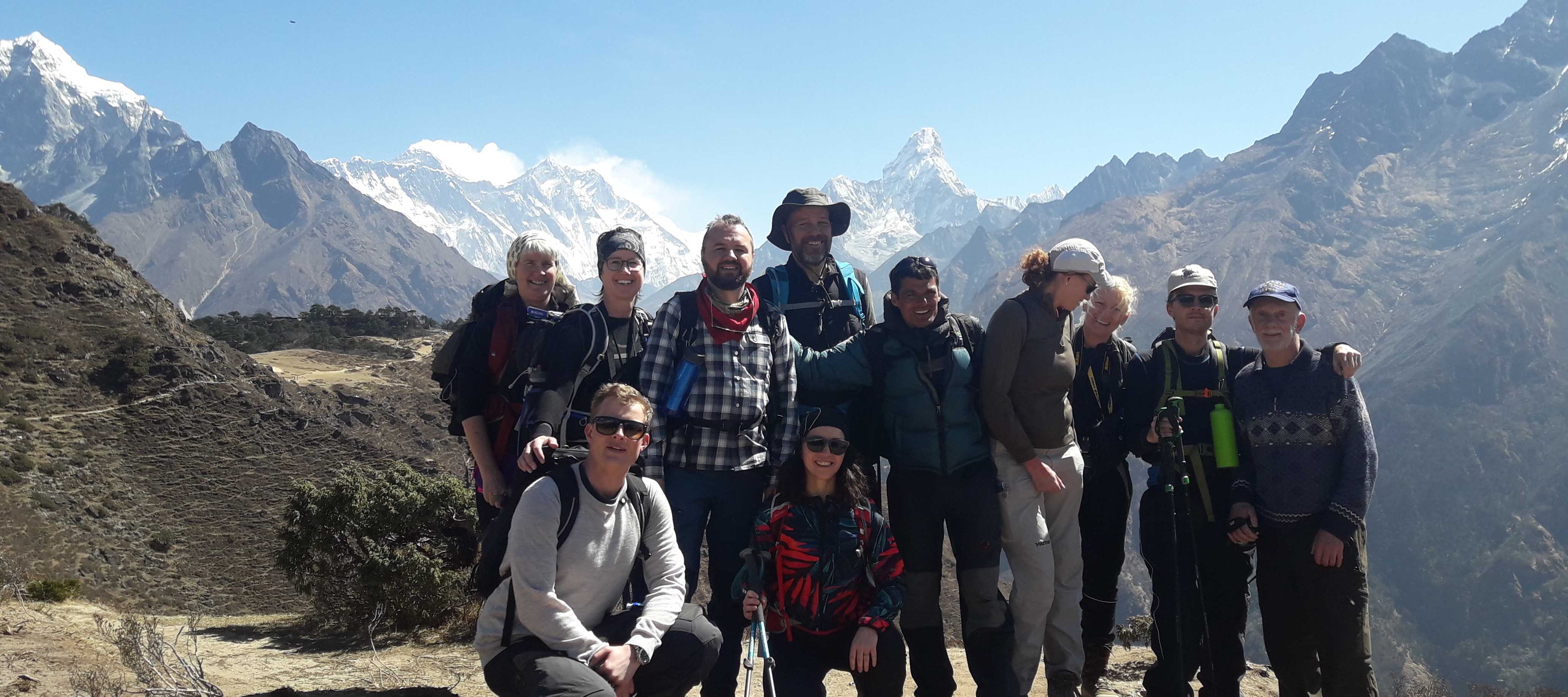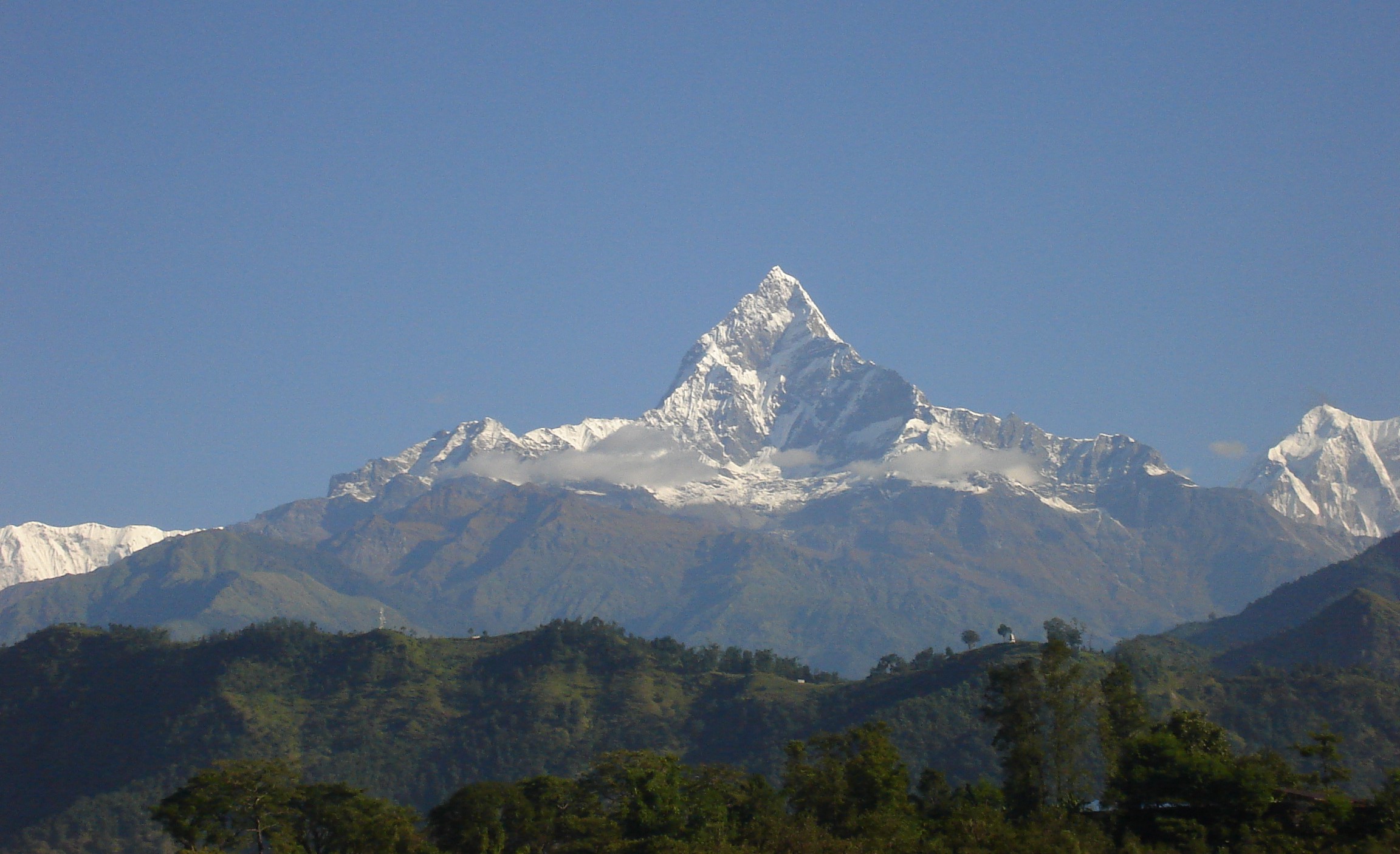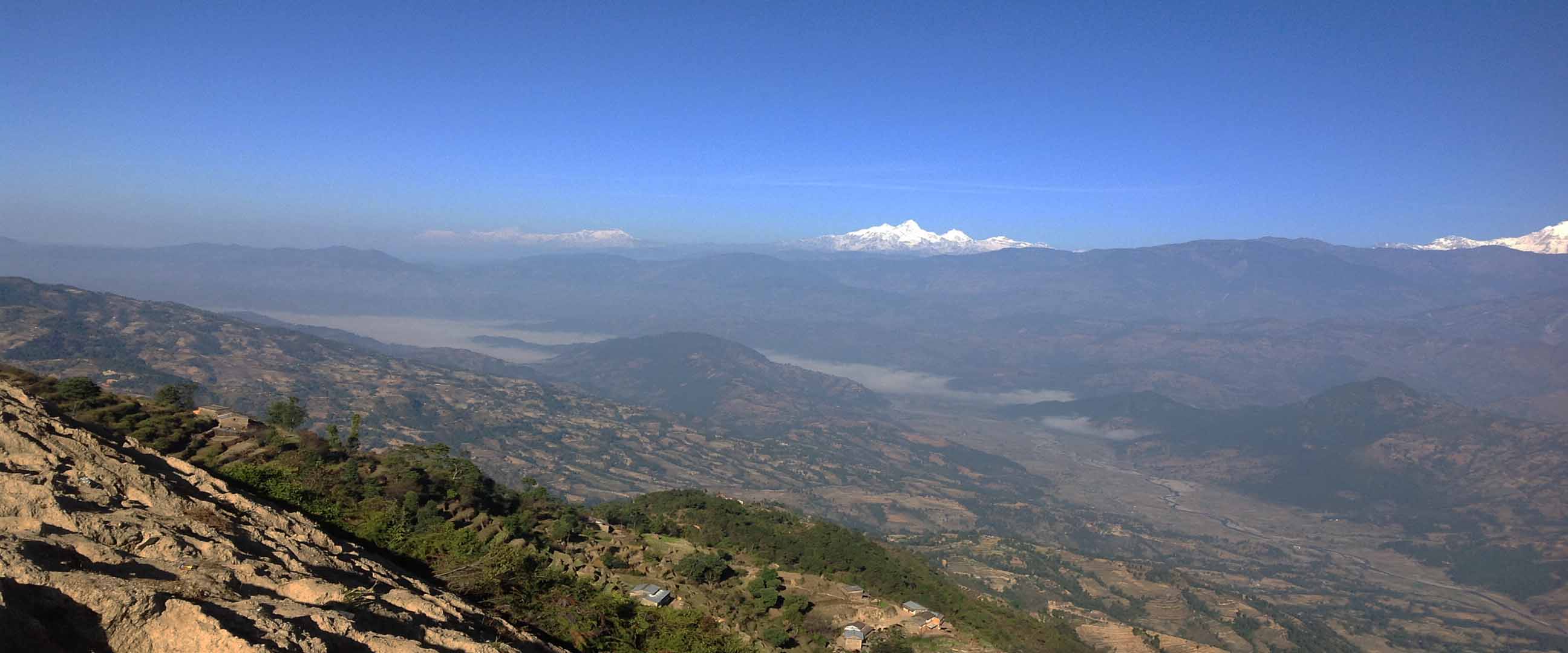- Home
-
Nepal
-
Trekking
- Dhampus trek
- Jomsom Muktinath Trek
- Annapurna Base Camp Trekking (Sanctuary)
- Annapurna Circuit(Round) Trekking
- Mardi Himal Trekking
- Ghorepani Cleaning Trek
- Annapurna Panorama Trek
- Annapurna Culture Trek
- Everest Base Camp Trek
- Everest Panorama Trek
- Khopra Trek
- Mohare Danda Trek
- Ganesh Himal Trekking
- Ganesh Himal Medical Trek
- Langtang Valley Trek
- Langtang Gosainkund Trek
- Ganja La Pass Trekking
- Ruby Valley Pangsang Pass Trek
- Langtang Gosainkund Helambu Trek
- Tamang Heritage Trek
- Panch Pokhari Trek
- Upper Mustang Trek
- Everest High Pass Trek
- Gokyo Valley Trek
- Gokyo Chola Pass Trek
- Salleri to Everest Base Camp Trekking
- Pikey Peak Trek
- Tsum Valley Trek
- Manaslu Circuit Trek
- Lower Dolpo Trek
- Makalu Base Camp Trek
- Ghorepani Poon Hill Trek
- Helambu Trek
- Jyamrung Trek
- Chepang Indigenous Trek
- Dhampus Sarangkot Trek
- Ghandruk Trek
- Surya Chaur Chisapani Trekking
- Yoga Soft Trek
- Indigenous Trek
- Nepal Social Treks
- Yoga Shamanism Trek
- Chisapani Nagarkot Dhulikhel Trek
- Kathmandu Valley Trek
- Khaptad National Park
- Jiri to EBC Trek
- Nomad Community Trek
- Annapurna Luxury Trek
- Tilman Pass Trek
- Helambu – Ama Yangri Trek
- Peak Climbing
- Chulu West Peak Climbing
- Chulu Far East Climbing
- Island peak via Gokyo-Chola-EBC
- Island Peak Direct Route
- Lobuche Peak Climbing
- Mera and Island Peak via Apulapcha Pass and EBC
- Mera Peak Direct Route
- Mera Peak Climbing
- Naya Kangi Peak Climbing
- Paldor Peak Climbing
- Pisang Peak Climbing
- Tent Peak Climbing
- Yala Peak Climbing
- Pachermo Peak via Tsho Rolpa Lake
- Lobuche Peak via Gokyo Chola Pass EBC
- Rafting and Kayaking
- Wildlife Safari
- Adventurous Trip
- Mountain Biking
- Hiking
- Tours
- Day Tours
- Expedition
- Ganesh Himal-I Expedition
- Ganesh Himal -IV Expedition
- Makalu Expedition
- Annapurna Expedition
- Ganesh Himal -V Expedition
- Dhaulagiri Expedition
- Ama Dablam Expedition
- Cho Oyu Expedition
- Everest Expedition from Tibet Side
- Everest Expedition
- Kanchenjunga Expedition
- Lhotse Expedition
- Manaslu Expedition
- Pumori Expedition
- Annapurna I Climbing
- Ganesh Himal Climbing
- Himlung Himal Climbing
- Tibet
- Tours
-
Bhutan
-
Tours
- Trekking & Hiking
- India
-
Tours
- Trekking and Hiking
- Multi Country
-
Nepal Tibet Bhutan Trekking
- Nepal Bhutan Tour
- Nepal Bhutan Trek
Jiri to EBC Trek
Key Points
- Destination: Nepal
- Duration: 23 Days
- Max Altitude: 5545 m.
- Activity: Trekking
- Fitness Level:: Strenuous
- Group-Size: 2-15 pax
Trip Overview
Jiri to Everest Base Camp is a historical trekking route as the Everest Expedition of 1953 in which Tenzing Norgay Sherpa and Edmund Hillary successfully climbed Mt Everest for the first time, and trekked up to the peak via this route.
Incredibly tall and closely towering mountain peaks; wide Himalayan ranges; and abundant greenery to start with, the Everest base camp trek brings you the joy of experimenting all. It is one of the most celebrated treks in the world. Mountain Delights Treks and Expedition offers one of the most elating trekking experiences in the Everest region with professional management.
Trekkers can explore the Khumbu/Everest region and get a look at the rich wildlife of forests too, be it flora or fauna along with mystic cultural exposures. Out of numerous mountains, the topmost attractions will be: Mt. Everest (8,848 m./29,029 ft) – the crown of the world, Mt. Lhotse (8,516 m/ 27,940 ft), Mt. Nuptse (7,861 m/ 25,791 ft), Mt. Ama Dablam (6,812 m/ 22,349 ft), Mt. Pumori (7,161 m/23,494 ft), Mt. Thamserku (6,608 m/ 21,680 ft), Kantenga(6782m/22250ft), Cho-Latse(6440m/21128ft), Tawache(6495m/21309) and others.
In addition, while on the trek you will enjoy alpine forests, spiritual serenity, and village cultures and welcoming Sherpa people. Visits to Buddhist monasteries, villages, and trade posts and passes will bring us the joy of connection and once in a lifetime experience. The cultural exchange you get to experience will be an addition to your lifestyle. Not only the trekking trail but the drive to Jiri will be visited by great sceneries, terrace farming sights, rafting sights in Bhote Koshi River, and unforgettable waterfalls. You could add up to your adventures by trying out bungee jumping in Bhote Koshi on the way to Jiri. The best time to visit the Jiri to Everest base camp trek is from mid-March to May and September to Mid-December.
Itenerary
Upon arrival at the Kathmandu International Airport, our representative will be there to greet and welcome you. You will be transferred to your respective hotel for check-in and will be given a short relaxation period. The same day, we introduce you to a market – specifically Thamel, where you can shop, eat, exchange money and carry out other necessities. Then, you will take part in a short trip briefing in our office.
This will end your first day, overnight at the hotel.
Any form of delay in arrival will postpone the event to best suited later.
Breakfast will seal the deal for beginning the tour.
Pashupatinath Temple: It is a worship Space devoted to the Hindu lord Shiva. You will sight the Bagmati river and rituals performed on the river bank. Pashupatinath temple is a listed UNESCO site structured in pagoda-style architecture. The month of February-March and July-August can be interesting times to visit the temple complex for cultural stretch given the festival of Shivaratri – the birthday of Shiva, and Teej festival respectively.
Boudhanath Stupa: It is one of the biggest stupas in Nepal in terms of size and height. Located in the east of Kathmandu, this holistic testament resembles Mahayana philosophy. It stands with four pairs of eyes directed in four primary directions.
The tour period is short and informative, it finishes with utmost satisfaction and a cultural tour of the city. You get the time to prepare for your trip to Everest and rest properly after the tour. Overnight will be spent at the hotel.
After breakfast, you set out for a long drive to Bandar. The drive won’t be hectic given the scenic view of the countryside. Before you reach Bandar, you cross Jiri- a small town known for the beauty of Switzerland and developed by the Swiss government on a technical school, and cheese factory.
Upon reaching, you will explore the beautiful villages and green scenery around. The main attractions will include friendly people and tremendous terrace farming. Overnight will be spent at the local lodge.
We begin by trekking down to the Likhu Khola and crossing the river at 1580m. We trek along the river to reach Kenja. Further, we trek our steep way to Lamjura pass then traversing to Sete and abandoned Gompa at 2575m/8448ft. Along the way, you get a chance to explore Sherpa village with an amazing identity. This brings us to the end of the day, rest at the local lodge for your night.
Our walk begins with a long but gradual climb to Lamjura La Pass (3,530 m/ 11,581 ft). During winter the trail is covered in frost/snow and the spring blooms with Rhododendrons. We reach Goyem; the midway which at the height of 3300m/10827ft is the highest point between Jiri and Namche bazaar. We fill our tummy with good lunch and then descend down to Tragdobuk (2860m/9383ft). This makes us close to our final destination of beautiful Sherpa village Junbesi. You enjoy the night stay at the local lodge in Junbesi.
After breakfast, your new day starts. Your first climb to a ridge at 3,080m/10104ft for the day. Mt. Everest appears at this particular point. We then trek our way on to Salung (2650m/8694ft). The trail leading from Junbesi today brings us to the Hospital and Airstrip at Phaplu, the district headquarters and bazaar (market) in Salleri. From Salung, trek down towards Ringmo Khola (2650m/8694ft), and then climb up to Trakshindo pass (3,071 m/10,075 ft). With the final drop to the monastery of the same name, we come to the end of this fluctuating trail for a day. We again spend our night at the local lodge.
Today, continue the trail down to Dudh Koshi (Milk River). From the river we stroke all our way up to Khari Khola. You encounter peculiarly grand forests and several Sherpa villages throughout the day. Our day of adventure ends with a rest at the local lodge.
We continue our long stretch by climbing up and passing through a narrow canyon before arriving at Puiyan. Overnight will be spent at the local lodge.
Our trek for the day starts with a climb to a ridge at 2,800m/9186ft ascending to the final ridge. We then descend down to Surke following the trail to Phakding. Today you meet the trail from the famous trek Lukla-Everest Base Camp. You stay the night at a local lodge in Phakding.
After breakfast, you trek along Dudh Kosi for the first half crossing multiple hanging bridges and then climbing steep two hours uphill through Himalayan pine and Deodar cedar forests to reach one of the most beautiful towns, Namche Bazaar. Namche used to be a trading town between Nepalese and Tibetan residents/merchants for centuries. Though now trans-Himalayan trade is restricted, Namche still remains a trading spot for local merchants. You will get your first glimpse of Everest, can shop, and acclimatize by climbing a hill nearby and staying two nights.
After breakfast, we begin our day roaming around Khumjung for acclimatizing. We follow the trail above Namche Bazar and come across Syangboche (3,780 m/12,402 ft) – the highest altitude airstrip in Nepal which is not permitted for commercial flights. The hilltop above Syangboche provides first view of magical Himalayan range including Taboche Peak (6,367 m/ 20,889 ft), Lhotse (8,516 m/ 27,940 ft ), Peak- 38 and Ama Dablam (6,812 m/ 22,349 ft), Thamserku (6,608 m/21,680 ft) and others. While at Khumjung (3,780 m/12,401 ft), you can visit the Hillary School – a high school built by sir Edmund Hillary who reached the summit of Mt. Everest at first in 1953. Lunch in one of the tea houses in Khumjung. You can visit Khunde where Hospital under Hillary's trust is serving local Sherpas.
You return to your hotel in Namche after this beautiful excursion and acclimatization trip to Khumjung.
Your day from Namche begins with a flat stretch for a couple of hours on a beautiful walking trail. Dudh Koshi river follows deep down the valley and the view of magnificent mountain ranges on all three sides. View of Thamserku, Kantenga, Ama Dablam, Lhotse Wall, Island Peak, Mt. Everest are excellent.
After the flat stretch comes to an end, you descend down to the river bed at Phungi Tenga for lunch. After lunch, your tough steep climb starts. It is good two hours climb up to Tengboche, a small hamlet surrounded by Himalayan peaks and pine forest. Tengboche Monastery, one of the most spiritual, and popular monasteries of Tibetan Buddhism in the Khumbu region, is located here. The Mani Rimdu festival that occurs from mid-October to mid-November is worth attending.
On this day we follow the trail into the beautiful forest and trek down to the Imja Khola and continue passing through the village of Pangboche (3,900 m/12,795 ft). The hike is not that strenuous, and the view of the peaks makes the day breathtaking. The scenery along our path to Dingboche, known as the “summer valley”, is amazing. We spend our night at Dingboche.
We mark this day for acclimatization and climb a hill nearby to an altitude of 5,100 m/16,732 ft. Enjoy breakfast, and then set out to climb Nagerjun hill located directly above Dingboche on the flanks of Chukung valley.
Climb high and sleep low is the formula of acclimatization, we are following.
The climb is quite physically demanding but rewarded with magnificent views of the peaks including Lobuche East (6,119 m/ 20,075 ft), Lobuche West (6,145 m/ 20,160 ft), Taboche, Thamserku, Kangtega and Ama Dablam and more. You even can see Mt. Makalu.
In the later afternoon, reach your Hotel, enjoy the lunch and rest of the day spent relaxing and preparing for the next day.
Trek starts to be tougher from here. As you are approaching higher altitude and deserted alpine glacial land, you will struggle to breathe more than in earlier days.
On this day we pass through beautiful pastureland and the village of Pheriche where the Trekkers Aid Post that offers treatment and consultation to trekkers on altitude sickness can be seen along the river bed. We trek our way to the yak pastures of Lobuche (4,910m/16108ft) crossing Dhugla pass where memorials of those who lost their lives in the Himalayas are situated. Overnight at the lodge in Lobuche.
After breakfast, your big day begins. You set for the Everest Base Camp.
You will walk in the moraines parallel to Khumbu Glacier which is visible from near Gorakshep – a small town where you are sleeping for tonight.
Once you reach Gorakshep, eat some meals and get ready for the Base Camp. The trail is winding in the glacial moraines and on the rocks. It takes about 3 hrs of hiking to reach the base camp from where you take a closer look at the Khumbu glacier and even walk crossing it.
This Base Camp located in the southern face is used by the expeditions. If you reach here in March-May, you will see hundreds of colorful tents by climbers.
You will then return back to Gorakhshep after spending some time at the Base Camp. Stay at the lodge in Gorakhshep for the night.
You start the thrilling day at pre-dawn by a steep climb to Kalapatthar – takes about 2.5 hrs – to catch the sunrise over the Himalayan peaks. Kalapatthar offers 3600 views of the mountains including the tallest south face of Mt. Everest, Lhotse face, Nuptse, Ama Dablam, Taboche, Cholatse, Lobuche East, and Pumori.
Enjoy the view of the Sunrise, mountain peaks, Khumbu glaciers, and others, take photos, and then climb down to your Hotel for breakfast.
Breakfast seals your long walk to Pheriche. Until the Dugla trail is the same as we headed up. From here, we cross a small stream and trek all the way to the beautiful Pheriche valley. The last stretch in the river bed is tedious to walk and reach Pheriche. But, the day is worth remembering and accomplishing. Stay at the lodge in Pheriche.
This day is a comparatively short and rewarding day. Phortse is a Sherpa village, off the trail to base camp that remains less explored. Explore the unique cultural identity and spend the night in this village at a local lodge.
Easy walk along the Imja Khola, short climb to Tengboche, descend Pungki Thanka and complete steep to Kyangjuma, and easier trail to Namche. Overnight local lodge.
After having breakfast, we follow the same trail we took before with a steady climb down through the forest towards the uphill of Dudhkoshi valley. We cross several suspension bridges and Sherpa settlements. Gradually moving ahead, we reach Lukla before sunset and conclude our enlivening journey. It’s time for celebration and enjoying a successful trip. Overnight local lodge.
We take a flight to Kathmandu. The flight will be an adventure and thrill in itself given the landscape. Heading towards Kathmandu valley will bring changes in air and leave the mountain fresh air back, but you get to rest your body after a long trek. You will get good food after weeks of meals in the Himalayas.
We transfer you to the hotel and leave you for the day to explore the nearest market and relax. You will spend the night at a hotel.
Kathmandu city comes with a century-long hiIndrachowk and Newroad, only to discover the historic and cultural identity of this beautiful city. You will then reach Kathmandu Durbar Square; the center to accumulate Kathmandu’sstory of markets, trading spots, various arts, and buildings with architectural and cultural affluence. On your last day, you will be exploring the local market of Asan, architectural prominence. Here, you will experience the unique culture of a “living goddess”, visiting her temple could make your trip informative and exhilarating given the cultural differences. After this eventful day, you will spend your night at a hotel and prepare for your departure the next day.
We will drop you at the airport and bid you our adieu. You will be taken to the airport 3 hrs before the scheduled flight.
What is Included?
- Nepal 3 star standard hotels with breakfast in Kathmandu.
- Tea house (Lodge) accommodation.
- All meals (Breakfast Lunch & Dinner).
- Tea Coffee (3 times a day).
- A professional trekking guide, Porter (Helper) and assistant guide above 5 pax.
- Air ticket (Lukla –Kathmandu).
- All food, drinks, Lodge, salary, Insurance, medical equipment, all transport for Trekking Staff.
- Private 4 wheeler drive from Kathmandu to Jiri.
- Kathmandu cultural and Historical sightseeing with Tour guide, Private transportation and entrance fee.
- Trekking Permit (TIMS).
- Everest National Park Entry Permit.
- Down Jacket, a sleeping bag, Flease liner and a duffel bag.
- All government taxes
What is Excluded?
- Any bar bills (alcoholic drinks, mineral water, and cold drinks), cigarettes, client’s personal insurance, and any kind of unforeseen expenses.
- Lunch and Dinner in Kathmandu.
- Tips for Guide Porter & Driver (Tips are not compulsory but expected)
- Anything that is not mentioned in Inclusion
Equipment Checklist
What to bring ??
This list outlines the required things to bring during the trekking hours. There are various selections and brands that you can have your own choice. Those equipment’s can be bought and hire easily at a reasonable price in Kathmandu.
General
- Down sleeping bag (you can borrow with us if required).
- Duffel or Rucksack bag (you can borrow with us if required).
- Daypack
- Down Jacket (you can borrow with us if required).
- Flish liner (you can borrow with us if required).
- Walking poles (Walking poles (optional, you can borrow with us if required).
- Water bottle with purification tablets.
- Hand washes liquids.
- Lip guard.
- Sunblock cream.
- Toiletry kit. Be sure to include toilet paper stored in a plastic bag, hand wipes, and liquid hand sanitizer, towel, soap, etc.
Upper Body - Head / Ears / Eyes
- Cap and ears covering hat.
- Glacier glasses
- Head torch.
- Ear-muffs and neck warmer is another piece of gear for extra warmth (optional)
Hand
- Hand gloves (1 light pair and 1 warm pair)
Core Body
- T-shirts.
- Light and weight thermal tops and warm thermal top.
- Light jacket and vest.
- Wind and rain jacket.
- Shirts and warm shirts.
Lower Body – Legs
- Long and short hiking pants.
- Lightweight and warm long underwear.
- Rain and windproof trousers and warm trekking trousers.
Feet
- Thin and thick socks.
- Trekking boots, light shoes and sandal.
- Trekking Gaiters.
Medicines and First Aid Kits
(Our guide will carry the first aid kit bag during the trek. We still recommend you to bring your personal first aid kit as you feel it necessary).
- Headache and fever medicine.
- Ibuprofen for general aches and pains.
- Burnt cream.
- Immodium or Pepto Bismol capsules for upset stomach and diarrhea.
- Diamox (commonly prescribed as Acetazolamide). Please discuss with us before starting to take this medicine.
- Antibiotics.
- blister treatments such as moleskin, hand plasts band-aids, some waterproof tape, anti-infection ointments, etc.
Miscellaneous
- Passport and extra passport photos (2 copies).
- Durable wallet/pouch for travel documents, money and passport.
- Pocket knife.
- Bandanas.
- Favorite snack foods and energy bars
- Paperback books, cards, mp3 player. Avoid players with moving hardware as it may not function. Remember, keep these items lightweights
- Binoculars.
- Camera.
All garments should be kept dry using waterproof stuff sacks or large puncture resistant plastic bags.
Trip Reviews
Write Your Review
- Best Price Guarantee
- Hassle-Free Booking
- Social Outreach Projects
- Responsible and Sustainable Tourism
- Award Winning Company
- Team of highly experienced Experts
- Former guide own the company
- Proven Track Record
Quick Inquiry
We Offer Group Discount
Write Us- 1 Pax US$ 1550
- 2 Paxes US$ 1350
- 3 Paxes US$ 1320
- 4 - 6 Paxes US$ 1290
- 7 - 12 Paxes US$ 1250
- 13 - 18 Paxes US$ 1210
- 19 - 24 Paxes US$ 1175
- 25 - 30 Paxes US$ 1150
- Best Price Guarantee
- Hassle-Free Booking
- No Booking or Credit Card Fees
- Team of highly experienced Experts
- Your Happiness Guaranteed
Quick Inquiry
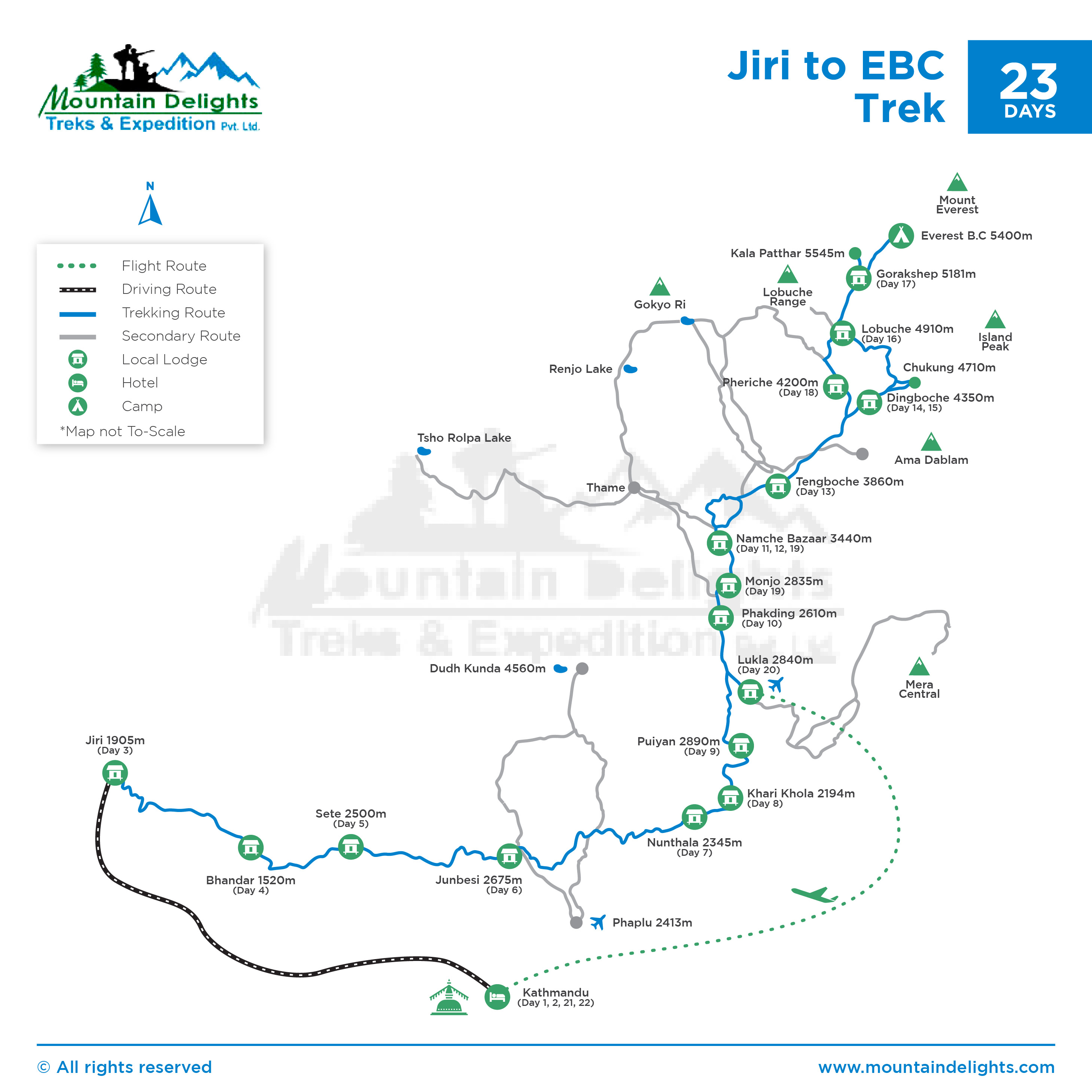 ;
;Related Packages
Are you looking forward to extend your travel business in nepal?
Partner With UsTOP
- Nepal Bhutan Tour
-
Tours
-
Trekking


